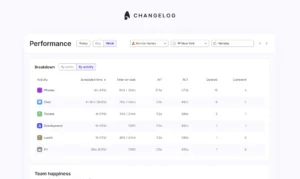
Should you extend your contact hours? | Free CX Webinar

Are you considering extending the hours your customers can reach you? Doing so comes with unique considerations and challenges that range from capacity and cost to strategy and implementation.
We spend our time working with customers who are planning on or who have recently extended their service hours. Here’s what we’ve learned over the years.
Why extend your service hours?
- Spread inflow over a longer period of time to avoid overwhelming your customer service team at peak times.
- Work down backlogs at quieter times.
- Provide better service for customers by being more available.
- If your business operates on weekends, stop Monday mornings from being overly busy.
Check-in on rising demand
How many customer interactions are you missing because they’re landing out-of-hours?
- You can usually find these somewhere in your service apps, things like Zendesk or Intercom.
How many people would you need to serve those demands, and is it efficient?
- Take the number of tickets that you’re receiving out-of-hours, and use that to work out the number of people you need to service that channel.
- If you’re using a tool like Surfboard, that happens automatically. If not, then find a staffing calculator online. Almost all of them will use the same method, and the results are relatively reliable.
How much time do you have set aside for non-service activities?
- If you’re only looking at service levels, it’s easy to overlook the projects, development and admin time your team need and you’ll miss out on giving them a better working environment.
When you’re looking at these results, consider:
- Is this efficient? If I’m only getting 15 tickets overnight, is it worth staffing someone to handle them?
- Can I afford this? Do I have enough people on my team to move to meet this demand?
- Is it important? Maybe the new tickets are all coming from a market that you’re not that interested in, while it would help your service levels it might not be the best use of your time.
Are you ready?
How do we know if we’re actually ready to supply that demand? Build ‘what-if’ scenarios.
A ‘what-if’ scenario is:
- Pretend that the team are already doing overnight shifts.
- Run your usual process with that assumption and try to make a schedule with overnight shifts in it.
- Then look at what happened. What happens to the expected service levels? Do they go up or down? How do they change at different times of day?’
Pull on the different levers available to you
- Try out a load of different shift patterns.
- See what happens if you add people to your team.
- Increase ticket volume by 50%.
The reason for doing this is that staffing and scheduling can be non-intuitive sometimes and the results can be really surprising. This is a great exercise for figuring out the best changes to make and can help you to anticipate issues before they happen.
Increasing backlog
If you see an increasing backlog, it’s a really strong signal that you need to act. The only way around this problem is to increase your staffing to match – how you approach this depends on the size of your backlog, here’s what we recommend:
- Ask your current team to start working late or early shifts, and have them work down your backlog while other channels are less busy.
- If you’re well-staffed on your other channels, pull people in to concentrate your efforts on the channel that’s struggling.
- If that’s not enough, create some shifts which are dedicated to clearing your backlogs – nights or weekends can be the perfect time for this if you can find people who are willing to work at those times.
- If you’re really strict about always hitting your service targets, then overnight shifts are probably the answer.
How to make it succeed:
- Do it as early as possible.
- Be clear on the purpose, especially with your team.
- Be vigilant in scheduling in advance.
- Use forecasts to drive weekend and out of hours requirements.
- Be fair to your team.
Hear more on extending contact hours by watching the webinar.



